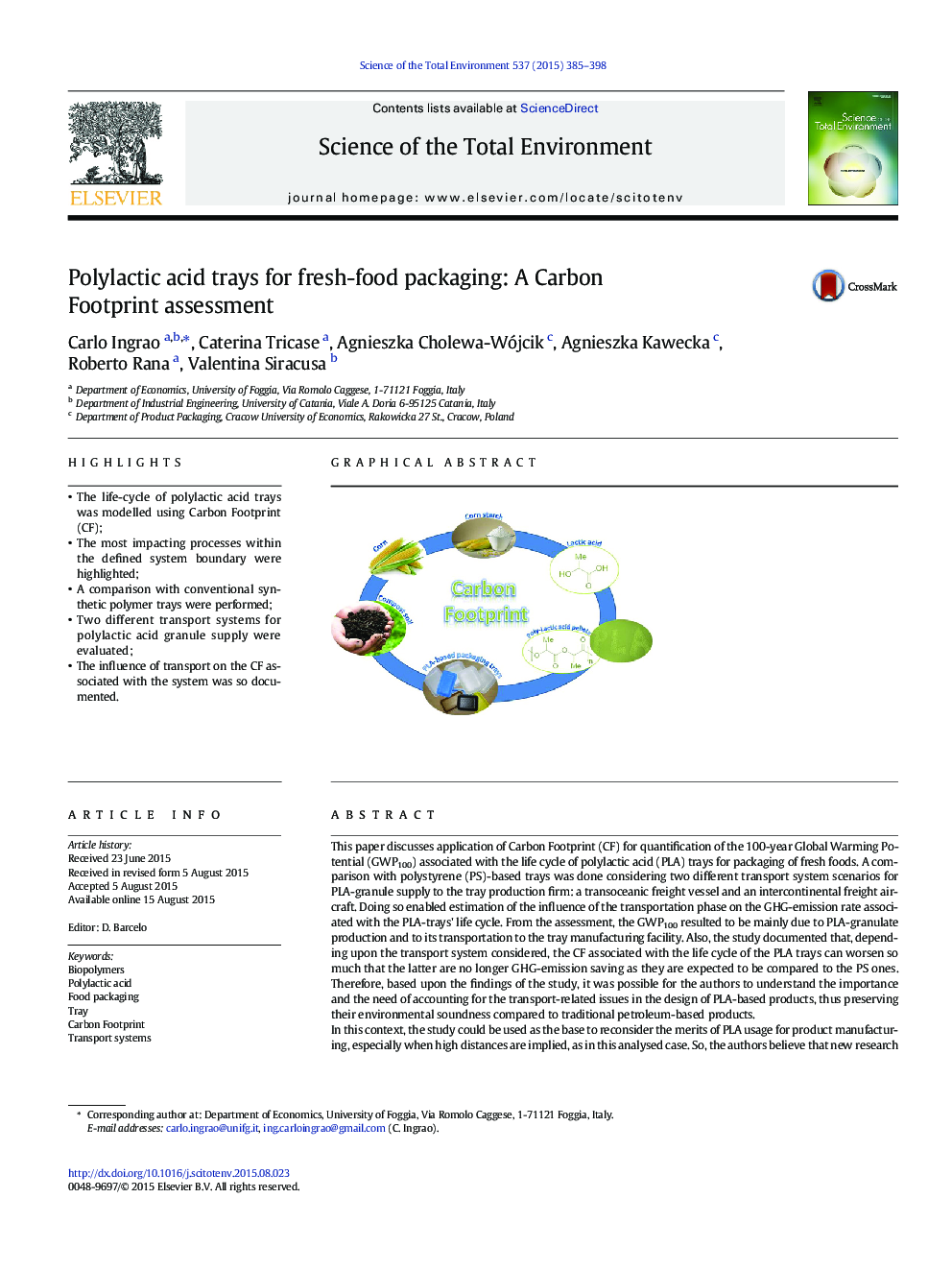| کد مقاله | کد نشریه | سال انتشار | مقاله انگلیسی | نسخه تمام متن |
|---|---|---|---|---|
| 6325523 | 1619747 | 2015 | 14 صفحه PDF | دانلود رایگان |
- The life-cycle of polylactic acid trays was modelled using Carbon Footprint (CF);
- The most impacting processes within the defined system boundary were highlighted;
- A comparison with conventional synthetic polymer trays were performed;
- Two different transport systems for polylactic acid granule supply were evaluated;
- The influence of transport on the CF associated with the system was so documented.
This paper discusses application of Carbon Footprint (CF) for quantification of the 100-year Global Warming Potential (GWP100) associated with the life cycle of polylactic acid (PLA) trays for packaging of fresh foods. A comparison with polystyrene (PS)-based trays was done considering two different transport system scenarios for PLA-granule supply to the tray production firm: a transoceanic freight vessel and an intercontinental freight aircraft. Doing so enabled estimation of the influence of the transportation phase on the GHG-emission rate associated with the PLA-trays' life cycle. From the assessment, the GWP100 resulted to be mainly due to PLA-granulate production and to its transportation to the tray manufacturing facility. Also, the study documented that, depending upon the transport system considered, the CF associated with the life cycle of the PLA trays can worsen so much that the latter are no longer GHG-emission saving as they are expected to be compared to the PS ones. Therefore, based upon the findings of the study, it was possible for the authors to understand the importance and the need of accounting for the transport-related issues in the design of PLA-based products, thus preserving their environmental soundness compared to traditional petroleum-based products.In this context, the study could be used as the base to reconsider the merits of PLA usage for product manufacturing, especially when high distances are implied, as in this analysed case. So, the authors believe that new research and policy frameworks should be designed and implemented for both development and promotion of more globally sustainable options.
95
Journal: Science of The Total Environment - Volume 537, 15 December 2015, Pages 385-398
